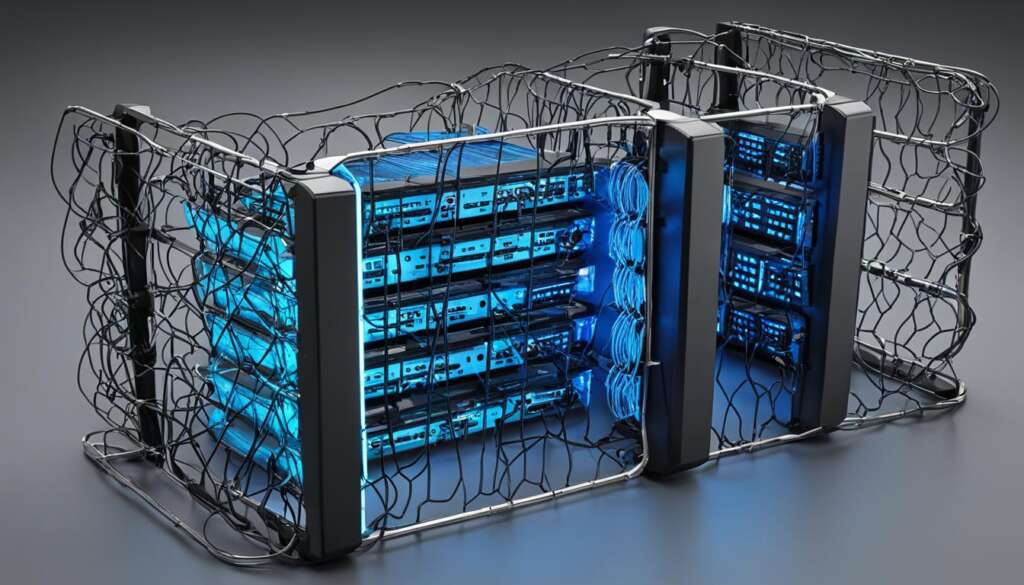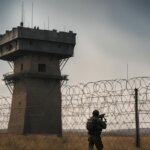Table of Contents
A DMZ, or demilitarised zone, is a perimeter network that adds an extra layer of security to an organisation’s internal local-area network (LAN) by protecting it from untrusted traffic. The main goal of a DMZ is to allow access to untrusted networks, such as the internet, while keeping the private network secure. In a DMZ, external-facing services and resources are stored, isolated, and given limited access to the LAN. This ensures that they can be accessed via the internet but the internal LAN cannot, making it difficult for hackers to gain direct access to an organisation’s data and internal servers. A DMZ creates a safe environment for communication and information sharing, minimising vulnerabilities of the LAN.
The Benefits of a DMZ in Network Security
A DMZ provides several benefits in network security. Firstly, it enables access control by allowing users to access services outside the network perimeter through the public internet. This is achieved through network segmentation, making it harder for unauthorized users to reach the private network.
Additionally, a DMZ prevents network reconnaissance prevention by keeping potential targets hidden from attackers. Even if a system in the DMZ is compromised, the internal firewall separates it from the private network, making external reconnaissance difficult.
It also blocks IP spoofing attempts, where attackers try to gain access by impersonating approved devices. A DMZ verifies the legitimacy of IP addresses, providing an additional layer of protection.
Architecturally, a DMZ can be designed in various ways, from a single-firewall approach to dual and multiple firewalls. The majority of modern DMZ architectures use dual firewalls for enhanced security.
| Benefits of DMZ in Network Security | Description |
|---|---|
| Access Control | Allows users to access services outside the network perimeter through the public internet. |
| Network Reconnaissance Prevention | Keeps potential targets hidden from attackers, even if a system in the DMZ is compromised. |
| IP Spoofing Protection | Blocks attempts to gain access by impersonating approved devices. |
| Flexible Architecture | Can be designed with various firewall configurations to meet specific security needs. |
Case Study: Dual Firewall DMZ Architecture
One popular design for a DMZ architecture is the dual firewall approach. In this setup, two firewalls are deployed to create additional layers of security. The external firewall, also known as the perimeter firewall, is responsible for filtering and inspecting incoming traffic from the internet. It acts as the first line of defense, blocking malicious traffic from reaching the internal network. The internal firewall, also known as the internal-facing firewall, is positioned between the DMZ and the internal network. It filters and inspects outbound traffic from the DMZ, ensuring that only authorized communications are allowed to reach the internal network. This dual firewall architecture provides a robust defense against external threats, preventing unauthorized access to sensitive data and systems.
DMZ Usage and Examples
DMZ networks serve specific purposes and are used in various scenarios. They separate an organization’s internal network from untrusted networks, like the internet, and provide a secure space for hosting external-facing services. Common examples of services placed in a DMZ include email servers, web servers, and FTP servers. These services can interact with the external network while remaining isolated from the internal network.
DMZs are also relevant in home networks, where they can be used on routers to create a buffer zone between external and internal devices. By placing home devices in the DMZ, potential threats from the internet are blocked, ensuring the security of personal information and sensitive data.
In industrial control systems, DMZs play a crucial role in protecting vulnerable operational technology (OT) systems from cyberattacks. By placing critical control systems in a DMZ, organizations can fortify their industrial networks against potential breaches, ensuring the integrity and availability of critical infrastructure.
DMZ network designs can vary depending on the specific needs and security requirements of an organization. Options range from a single-firewall approach to dual-firewall configurations. Each design offers different levels of security and access control, allowing organizations to customize their DMZ architecture to align with their unique network infrastructure and protection needs.
FAQ
What is a DMZ in network security?
A DMZ, or demilitarized zone, is a perimeter network that adds an extra layer of security to an organization’s internal local-area network (LAN) by protecting it from untrusted traffic. The main goal of a DMZ is to allow access to untrusted networks, such as the internet, while keeping the private network secure.
Why is a DMZ important?
A DMZ provides several benefits in network security. Firstly, it enables access control by allowing users to access services outside the network perimeter through the public internet. Additionally, a DMZ prevents network reconnaissance by keeping potential targets hidden from attackers. It also blocks IP spoofing attempts, where attackers try to gain access by impersonating approved devices. Architecturally, a DMZ can be designed in various ways, from a single-firewall approach to dual and multiple firewalls.
How is a DMZ used in network security?
DMZ networks serve specific purposes and are used in various scenarios. They separate an organization’s internal network from untrusted networks, like the internet, and provide a secure space for hosting external-facing services. Common examples of services placed in a DMZ include email servers, web servers, and FTP servers. DMZs are also relevant in home networks, where they can be used on routers to create a buffer zone between external and internal devices. In industrial control systems, DMZs are used to protect vulnerable OT systems from cyberattacks. DMZ network designs can vary, with options ranging from a single-firewall approach to dual-firewall configurations.







